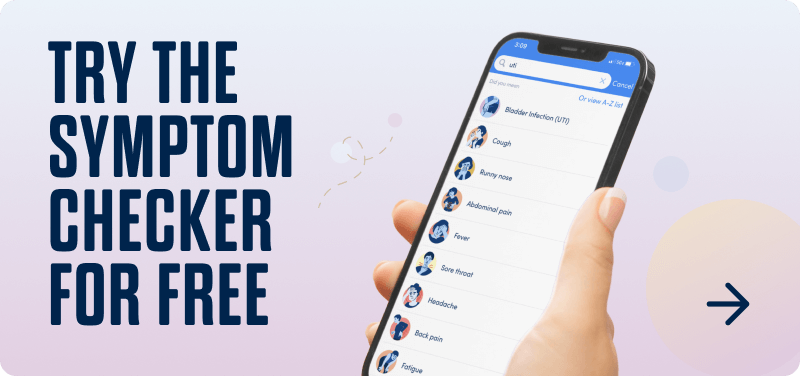A tooth infection, sometimes called a dental infection or a dental abscess, is a condition that occurs when bacteria enter a damaged tooth or the gums around it. The bacterial infection triggers an immune system response, which leads to swelling, inflammation, or pus, a thick fluid of dead tissue, bacteria, and white blood cells. If the condition progresses, pus can accumulate within the infected area, forming an abscess or pocket of pus near the affected tooth or teeth.
Dental infection symptoms vary according to the severity of the infection and may include throbbing or persistent tooth pain, fever, sensitivity to hot or cold food, bad breath, a discolored tooth, difficulty swallowing, or swelling in your jaw, neck, cheeks, or gums. Although modern dentistry and oral health practices have made most dental infections less concerning than they once were, the condition can become serious and even life-threatening if left untreated.
If you believe you have a tooth abscess, seek treatment right away. Some infections may require a procedure to drain pus, fill a cavity, or remove an infected tooth, and some, but not all, infections may benefit from antibiotics. In rare cases, severe infections may require intravenous antibiotics or surgery. Your dentist or healthcare professional may also recommend over-the-counter medications to help manage any pain.
Read on to learn more about dental infections, symptoms to watch out for, and dental treatment options, including the most commonly prescribed antibiotics.
What Is a Tooth Infection (Dental Abscess)?
A tooth infection or dental abscess (sometimes called an abscessed tooth) occurs when a bacterial infection enters a damaged tooth or gum tissue and begins to multiply.
As the immune system responds to fight the bacteria, white blood cells cause swelling and a natural byproduct called pus builds up at the infection site. If the pus is unable to drain naturally, a pocket of pus (abscess) develops at the area.
Dental infections are polymicrobial, meaning they’re caused by multiple types of bacteria rather than by a single bacterium. You can develop three major types of dental infections:
- Periodontal abscess: When an injury or gum disease (periodontitis) allows bacteria to enter and infect the bone and tissue structures that support a tooth.
- Periapical abscess: When an injury, previous dental work, or untreated tooth decay allows bacteria to enter and infect the soft pulp inside of a tooth.
- Gingival abscess: When an injury or sharp piece of food pierces the gum tissue and allows bacteria to enter and infect the gums.
It’s essential to seek medical advice if you have a painful toothache or believe you have an abscess. If left untreated, your tooth infection can spread to other parts of the body, leading to life-threatening complications.
The best way to prevent dental infections is to maintain good oral hygiene, schedule regular checkups with a dentist, avoid high-sugar foods, and abstain from smoking.
What Are the Symptoms of a Dental Infection?
Depending on the location and extent of the infection, dental infection symptoms can range from mild to severe. If you have a tooth infection, you may experience one or more of the following symptoms:
- A lump or bulge around the infected tooth
- Throbbing or persistent pain around the infected tooth
- Throbbing or constant pain that radiates to your jaw, neck, or ear
- Pain in your face
- Red, swollen, or bleeding gums
- A swollen mouth or face
- Sensitivity to hot or cold temperatures
- Tenderness or sensitivity to touch around the infected tooth
- A discolored or loose tooth
- Bad breath or a foul taste in your mouth
- Difficulty opening your mouth
If a tooth infection goes untreated, bacteria can spread and infect areas of your jaw, face, head, or neck. In rare instances, your infection can develop into a serious skin infection (cellulitis) or blood infection (sepsis). Symptoms of a tooth infection spreading to body parts outside the mouth include:
- High fever and chills
- Red, warm, or swollen skin
- Confusion, dizziness, or lightheadedness
- High heart rate
- Nausea or vomiting
- Headache
- Fatigue
- Feeling generally ill or unwell (malaise)
If you experience these symptoms, seek medical attention from a healthcare provider immediately.
Tooth Infection Treatment: What’re Your Options?
To treat a tooth abscess, your dentist will perform an exam and often take an x-ray to locate your infection and determine its severity and whether it has spread. Based on these findings, treatment options may include:
- Draining the abscess: Your dentist or healthcare provider will administer a local anesthetic and then create an incision in the abscess to drain the pus.
- Performing a root canal treatment: Your dentist will administer an anesthetic and then drill into your infected tooth to remove the pus collected in its interior. After they clean the area, they will fill, seal, and cap the tooth to complete the root canal procedure and ensure that no more bacteria can enter.
- Extracting the tooth: Your dentist may recommend extracting a tooth if it is too damaged to save. Once they pull your tooth, they will drain the area of any remaining pus to treat the abscess and relieve your pain.
In most cases, the American Dental Association recommends that dentists treat abscesses and other causes of dental pain with appropriate dental procedures and pain relievers, not antibiotics.
To manage your pain, your dentist may suggest taking over-the-counter pain relievers like ibuprofen (Advil), acetaminophen (Tylenol), or naproxen (Aleve) before or after your dental procedure.
Antibiotics for tooth infection
If your dentist suspects that your infection has spread or is at risk of spreading to other parts of your body, they may prescribe a course of antibiotics to keep you from developing a more severe and system-wide infection.
The antibiotics prescribed depend on the specifics of the bacterial infection, including the kind of bacteria present, the severity of the infection, and any allergic reactions you may have to medication. The most commonly prescribed antibiotics include:
- Penicillin and amoxicillin: A common first choice, penicillin or amoxicillin are safe and effective for the majority of dental infections.
- Amoxicillin-clavulanate: While most infections respond well to amoxicillin or penicillin, some stubborn or more severe infections may respond better to amoxicillin-clavulanate. Your healthcare provider may also prescribe this if they suspect your infection may be resistant to amoxicillin or penicillin.
- Clindamycin: Clindamycin can be used for tooth infections that might be resistant to penicillin or amoxicillin or for patients who have allergic reactions to penicillin or other first-line antibiotics.
- Metronidazole: Dentists or healthcare providers may use metronidazole in combination with another antibiotic, such as amoxicillin, to eradicate very specific types of bacteria that can cause dental abscesses and socket infections. Metronidazole is less commonly used for simple dental infections and rarely used alone.
- Erythromycin: Providers may prescribe erythromycin as an alternative antibiotic for patients with allergies to other options.
No matter which antibiotic your doctor prescribes, it’s crucial to take the full course of medication precisely as directed, even if you begin to feel better. If you stop taking your medicine early or skip a dosage, you may end up creating a drug-resistant infection that will be harder to treat.
Although some natural and alternative remedies may provide some relief for discomfort, none have been proved to be safe and effective for the treatment of dental infections. If you believe you have a dental infection, seek medical care from a professional rather than trying home remedies, as these infections can spread and, in some cases, become life-threatening.
Are there effective home remedies that treat tooth infections?
While there are no home remedies for a tooth infection, your dentist or healthcare provider may suggest that you use home remedies such as the below in addition to their recommended treatment plan to ease your symptoms:
- Rinsing your mouth with saltwater, swishing with a baking soda solution, or using hydrogen peroxide as a mouthwash may help kill bacteria and promote healthy gums.
- Applying a cold compress to the infected part of your face may reduce pain and swelling.
- Over-the-counter tooth pain gels, clove oil, and pain medications such as ibuprofen and acetaminophen may help relieve pain.
What Happens If You Don’t Treat Your Tooth Infection?
Dental infections were once a common cause of death. Modern advancements in dentistry, improvements in oral health (including the invention of the toothbrush and toothpaste), and antibiotics have considerably improved the outlook for tooth infection patients.
If you suspect that you or someone you know has a tooth infection, seek dental care immediately. Most tooth infections do not resolve on their own and require medical intervention to treat properly.
Even if your abscess ruptures on its own, it may not empty completely, leaving bacteria to potentially develop into serious, sometimes life-threatening infections in other parts of your body. If your infection does resolve on its own, it is likely to recur unless the underlying gum or tooth disease is treated by your dentist.
When to See a Healthcare Provider or Dentist
While any doctor or healthcare provider can prescribe treatments such as antibiotics that will help temporarily, if you experience pain, swelling, tenderness, or other symptoms that you believe may be related to a dental abscess, tooth infection, or injury, schedule an appointment with your dentist as soon as possible. You want to treat your infection appropriately so that it doesn’t spread to other parts of your body or put you at serious risk.
If you experience difficulty breathing or swallowing, develop a fever or swelling under your tongue, or suffer from any other indication that your infection might be spreading to other parts of your body, go to your nearest emergency room. They may not be able to treat your tooth infection (you’ll still have to see a dentist for any dental procedures), but they can prescribe a course of treatment to ensure that the bacteria in your mouth does not spread to other areas of your body.
How K Health Can Help
Did you know you can access online urgent care with K Health?
Check your symptoms, explore conditions and treatments, and if needed, text with a healthcare provider in minutes.
K Health’s AI-powered app is based on 20 years of clinical data.

 Medically reviewed
Medically reviewed

